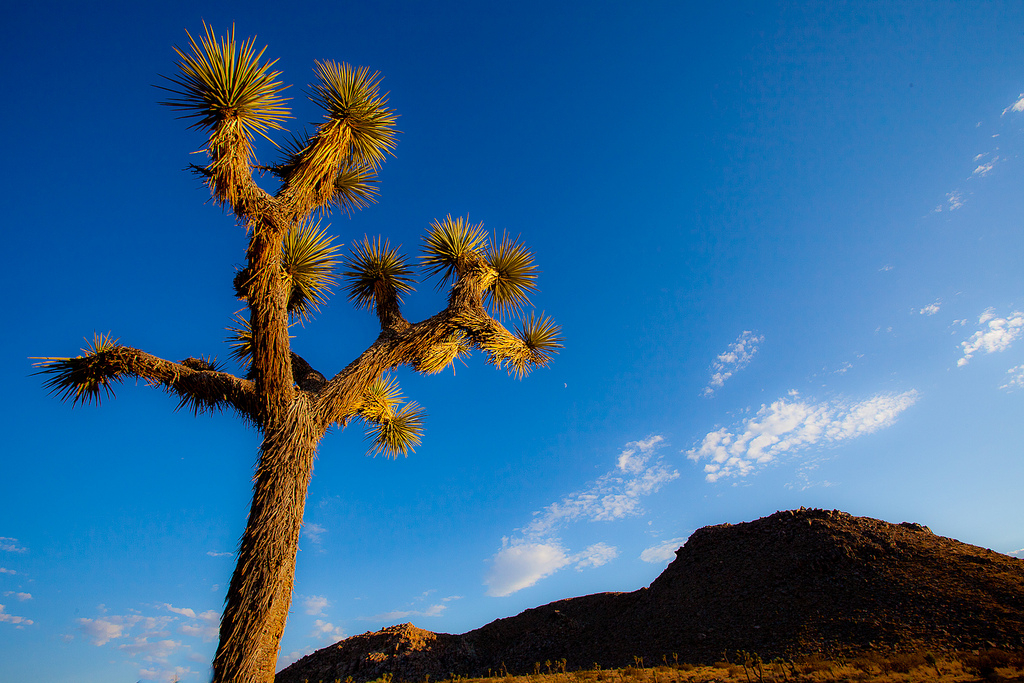
Joshua Tree National Park is a popular day trip from the Palm Springs area, but it’s also a worthy destination of its own. The 790,000 acre park is right where the Colorado and the Mojave deserts meet. It’s of course named after the giant Yucca plants that cover the area. They actually got that name from the Biblical prophet Joseph, from the Mormon settlers who first came to the area.
The area itself is quite stark and full of giant boulders, which makes it a great place for camping, climbing, riding bikes, and just hanging out. Joshua Tree is actually one of the most popular rock climbing places in the world with over 4,500 different rock climbing routes that have already been established in the area. There are a couple different companies that provided guided rock climbing excursions if you are new to the sport or to the area, as safety is an obvious concern.
The Joshua Tree is not the only plant life you’ll see despite being named after it, as the area is also full of juniper and cactus. As for animal life, it wouldn’t be surprising to encounter a tarantula, rattle snake, lizard, jack rabbit, roadrunner, or coyote, so it’s something to keep in mind when you’re walking around.
On the Northern perimeter of the park is where there are going to be the most towns, which can be a good place to head unless you’re looking for complete alone time. The closest airports to the park are the Palm Springs airport and the Ontario airport, and there is not a lot of public transportation to get there so renting a car will be important if you decide to fly into the area.
During the summer Joshua Tree can get quite hot, with average temperatures climbing over 100 degrees F during the day and dropping to the 70’s at night. In the spring and fall the average daytime temperatures are around 85 degrees while the night are around 50. In the winter the days are closer to 60 degrees and the nights get below freezing.
The park does allow backcountry hiking and camping so technically you can set up camp wherever you want, but do keep in mind that resources are limited and that carrying enough water on you at all times in incredibly important. Keep in mind that are no restaurants or stores inside the actual park, but that there are some not too far away just outside the park. Water can be found at the visitor centers and at some of the campgrounds inside of the park. If you are staying somewhere that does not have water, it is recommended that you have one gallon of water per person per day to ensure that you will have enough to drink while you are there.
All of the campgrounds are open year round, and most of them fill up very quickly on the weekends. Some of them can be reserved ahead of time online. If you’re going the backcountry route, keep in mind that you must camp one mile from the road and 500 feet from any trail. Permits are required.
Those campsites sell out seriously. Some used to be free but they’re not anymore
some campsites dont have water?
Yeah you don’t want to get caught out there without water big trouble
reeeagag
I looove Joshua Tree
That sounds like a lot of water to be carrying…